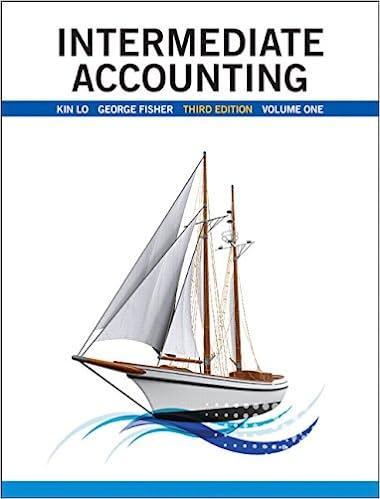Question
The standard pharmaceutical industry jokes about the cost of getting a new drug to market goes something like this: The first pill costs a billion
The standard pharmaceutical industry jokes about the cost of getting a new drug to market goes something like this: "The first pill costs a billion dollars to make. Everything after that is pure profit." It would seem that any firm trying to develop new drugs needs to have deep pockets and a high tolerance for risk. In fact, although estimates vary, it is generally recognized that the chance a new compound will eventually obtain FDA approval is in the neighborhood of one to five in a thousand! U.S. drug patents last for 20 years. But often the patents are applied for long before the drug is ap[1]proved and hence the patent protection may be effective for as little as half that time once the drug is on the market. Other protection may be available in the form of "exclusivity" which, depending on the type of exclusivity, can last for six months to seven years and goes into effect only after the drug has been FDA[1]approved. The FDA review site4 cites DiMasi et al. (2003), who summarized the stages of the drug-approval process along with the average cost, time commitments, and probabilities by stage. A subset of that information has been used to create Table 1. Additionally, Dimasi et al. suggest that the chance of the initial Investigational New Drug Application (the "IND") being approved—which is the required first step before Phase I clinical trials can begin—is 40%, while the development expenses through IND approval are approximately 30% of the total approval cost. On the brighter side, the chance of approval of the New Drug Application ("NDA"), which is the final request sub[1]mitted to the FDA after all three clinical trial phases have been completed, is 90%. Since Marnac didn't have the in-house expertise to feel confident in estimating the individual costs and likelihood of passing the various stages of FDA approval, Marnac relied on the literature, in particular on the work cited above of DiMasi et al. (2003) to expand and revise its estimates in the FDA approval process. Marnac eventually passed Phase I and after reviewing its options, Margolin decided to open discussions with InterMune concerning pirfenidone. InterMune and Pirfenidone After discussions with Marnac, Inc. and co-licenser KDL GmbH over licensing pirfenidone for clinical development, InterMune had to weigh the expected costs and benefits to decide whether to conclude the agreement and take the license. For InterMune to license pirfenidone, it would have to pay Marnac and KDL an upfront payment of $18.8 M and an additional $14.5 M for each successful clinical milestone as it occurred. InterMune would pick up the clinical trial process at Phase II, which would cost $52.5 M (author's estimate) to conduct and likely take three years to yield results. Analysts suggest only a 33%5 probability that pirfenidone will pass Phase II trials. In the event Phase II results are insufficient to lead to FDA approval, it is possible to alter dosage and endpoint variables (i.e., the preselected measures of clinical success, aka "response variables"), and to repeat Phase II, at a cost of an additional $52.5 M. The re-trial would have a somewhat higher probability of success. If pirfenidone reaches Phase III, InterMune then would conduct independent Phase III trials in both the United States and Europe. Total cost of testing would reach $195 M, and the results likely would take five more years to become available. The probability of FDA approval of pirfenidone for use only in the United States is estimated at 20%. The probability of EMA approval for use of pirfenidone only in Europe is estimated at 20%, while the probability of approval for use in both United States and Europe is estimated at 45%. Expected revenues of the three successful outcomes are $825 M (U.S. approval only), $1,113.75 M (EU approval only), and $1,762.5 M (US and EU approval).
Question:
Prepare a Detailed analysis of Pirfenidone: Use decision tree. Decision trees are a powerful tool in providing a more nuanced analysis that considers the contingency nature of costs and revenues. Please use the data in the section titled "Drug Development Process and the FDA Approval Process" to:
(a) Create a decision tree to determine the value of the drug. Use $74.25 and $48.15 as the costs for IND and NDA approvals, respectively (see if you can figure out how to deduce these numbers from the other information).
(b) What is the expected value of the drug in this analysis? Is it different from First Cut Analysis? (It should be). Why?
(c) Identify two or three inputs to which the expected value is most sensitive.
Hint: It may be helpful to start the tree for Q2 with a decision node for developing Pirfenidone or not. (Though it isn't necessary to do this)
The formatting should include the actual decision tree diagram as well.
Table 1 An Overview of the Drug Development Process
| Testing Phase | Phase I | Phase II | Phase III |
| Objective | safety | Safety, dosage | Safety, efficacy, side effects |
| Mean Cost (discounted Million $) | 15.2 | 23.4 | 86.5 |
| Duration (Months) | 21.6 | 25.7 | 30.5 |
| Conditional Probability of Reaching the Next stage % | 75% | 48% | 64% |
Step by Step Solution
3.41 Rating (154 Votes )
There are 3 Steps involved in it
Step: 1
I can certainly help you with the analysis using a textbased approach but Im unable to create visual diagrams like decision tree diagrams Lets work th...
Get Instant Access to Expert-Tailored Solutions
See step-by-step solutions with expert insights and AI powered tools for academic success
Step: 2

Step: 3

Ace Your Homework with AI
Get the answers you need in no time with our AI-driven, step-by-step assistance
Get Started


